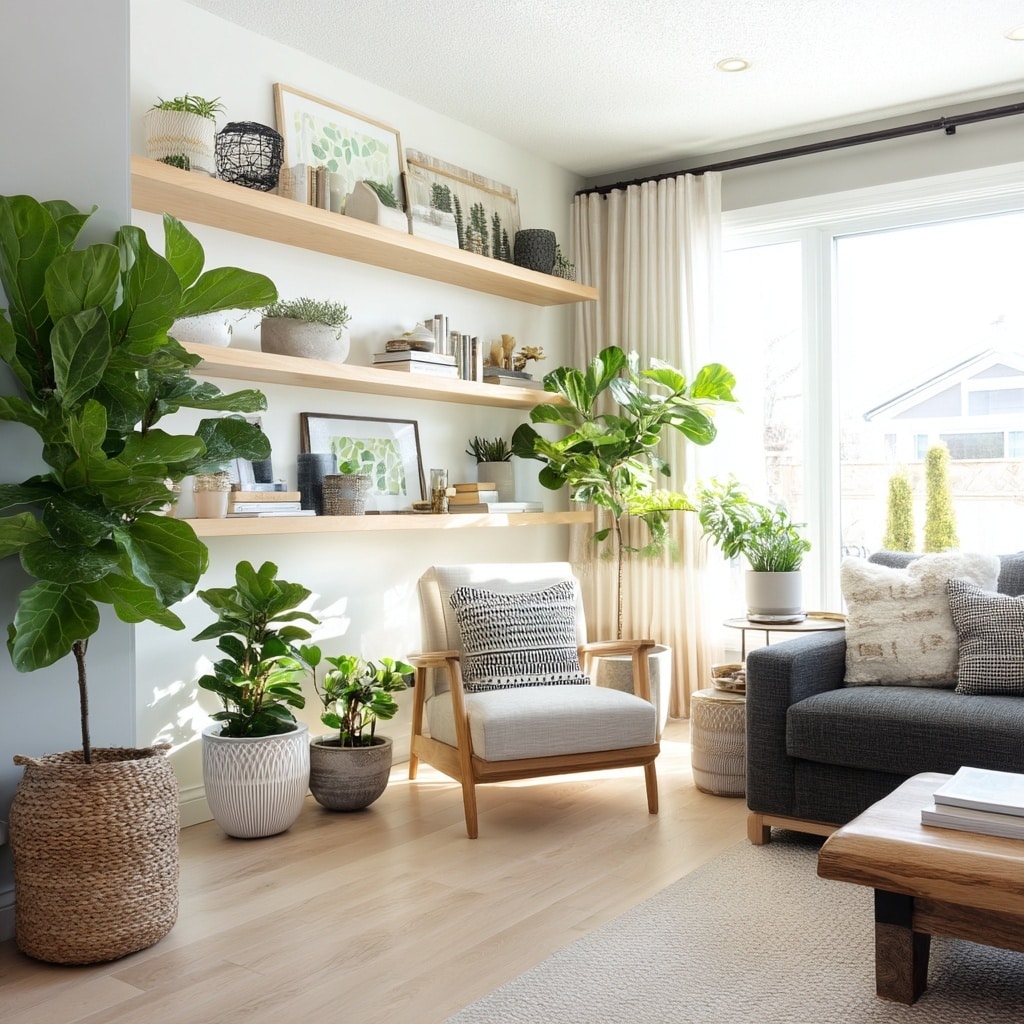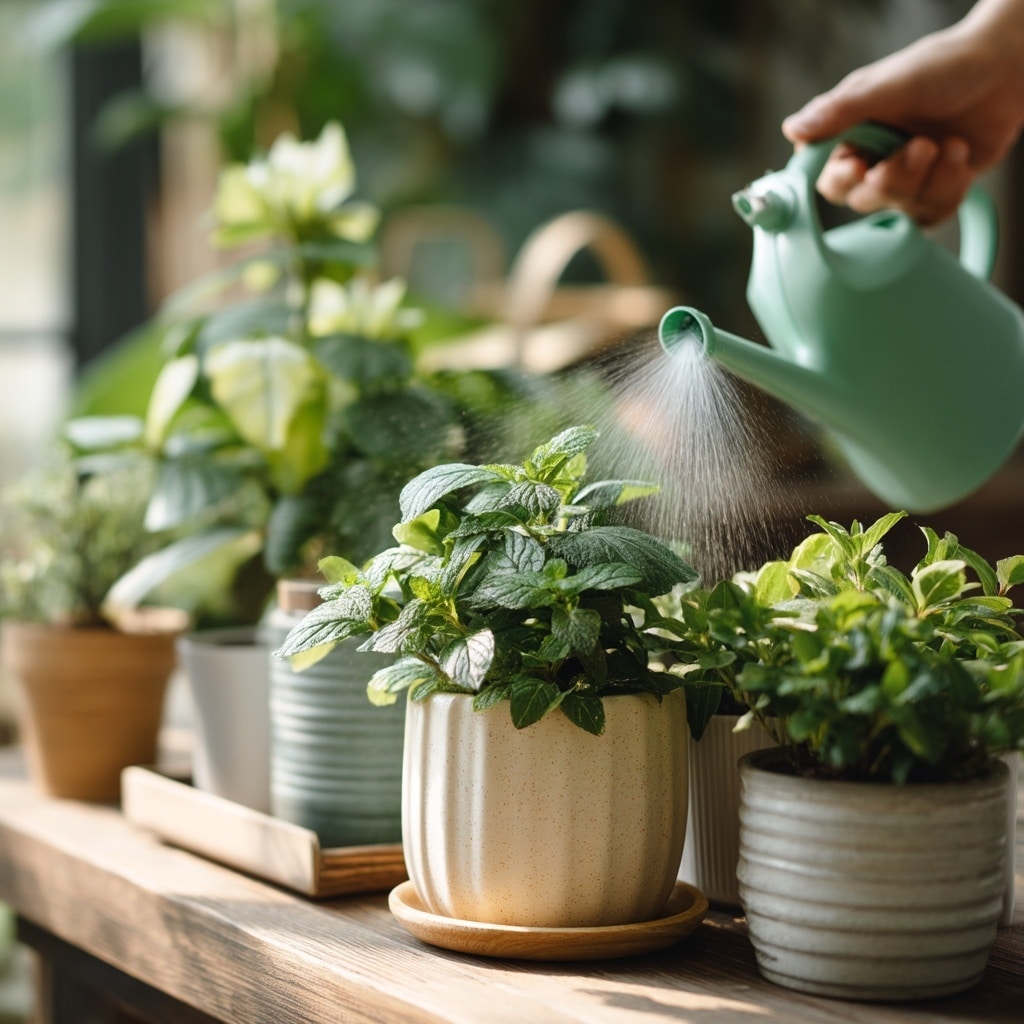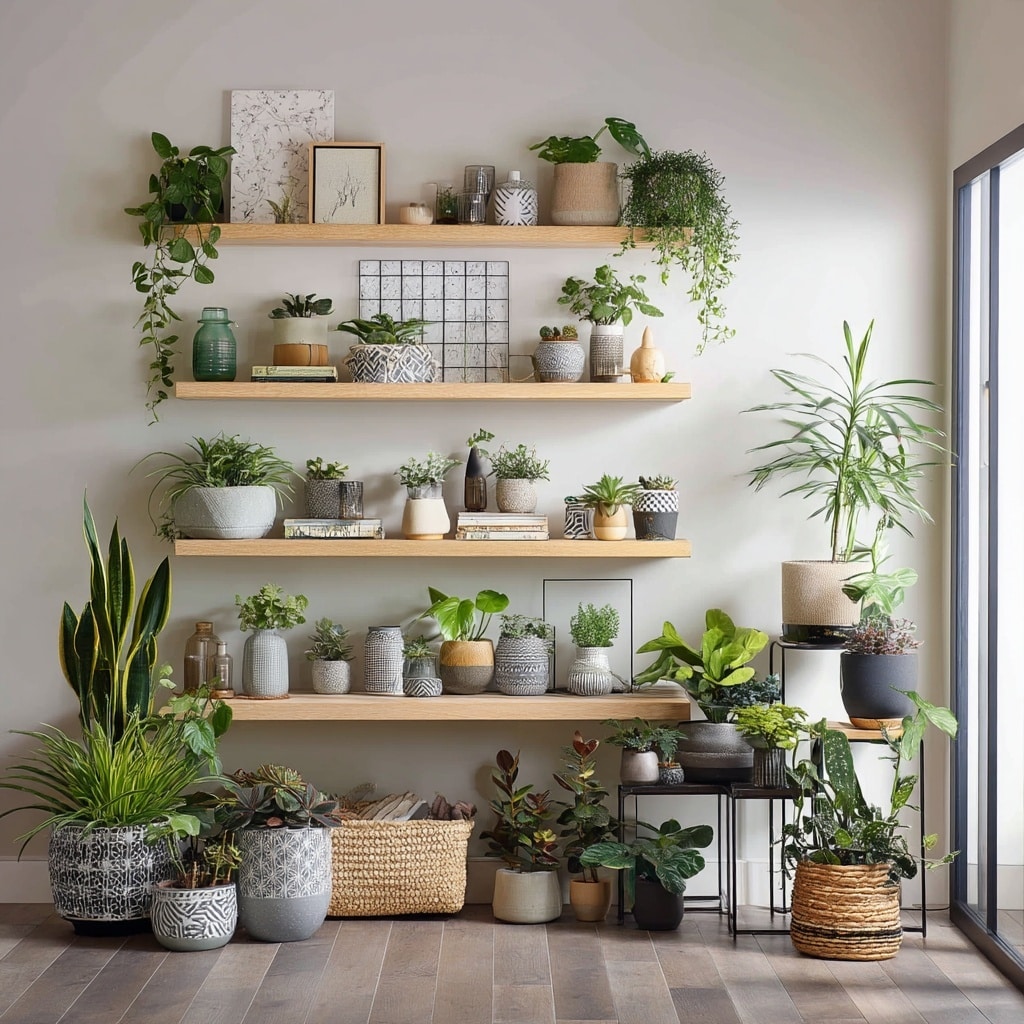Plants can do more than just sit pretty on your windowsill—they can transform your bedroom and living room into serene, breathable spaces filled with life and calm. Whether you’re after a cleaner indoor atmosphere, a splash of green, or a gentle mood booster, choosing the right indoor plants makes all the difference. Bedrooms and living rooms, often used for rest and relaxation, benefit greatly from leafy companions that require minimal care but deliver maximum charm. This guide brings you smart, stylish ideas for selecting and styling indoor plants to elevate your home’s most lived-in spaces.
Benefits of Indoor Plants in Bedrooms and Living Rooms
Bringing plants into your bedroom or living room isn’t just about aesthetics—it’s about enhancing your lifestyle. These natural companions offer multiple benefits that support mental clarity, restful sleep, and a healthier environment.
Improves Air Quality
Many indoor plants are known for their ability to purify the air by filtering out common toxins like formaldehyde and benzene. While the effect is subtle in small spaces, even a few well-placed plants can contribute to cleaner air and better humidity control.
Promotes Relaxation and Better Sleep
The presence of greenery has been linked to reduced stress and anxiety. In the bedroom, certain plants like lavender or jasmine may even help lower your heart rate and encourage deeper, more restful sleep.
Adds Natural Decor
With so many shapes, textures, and colors, plants double as décor. Whether you’re going for a minimalist vibe or boho chic, there’s a plant to match your aesthetic. They soften harsh edges and add life to dull corners, instantly making your space feel more inviting.
Boosts Mental Health
Caring for plants, even in small ways, has been shown to improve mood and increase feelings of productivity and satisfaction. A few potted friends around your living room or bedroom can act as a quiet mental boost throughout your day.
Best Plants for Bedrooms

When choosing plants for your bedroom, it’s important to focus on those that thrive in low light and promote a calm, healthy atmosphere. Here are some of the best options that combine beauty with functionality.
Snake Plant (Sansevieria)
Also called the mother-in-law’s tongue, the snake plant is a low-maintenance superstar. It releases oxygen at night, making it perfect for better sleep. Its tall, architectural leaves add structure to any bedroom corner.
- Light needs: Low to bright, indirect light
- Watering: Every 2–3 weeks
- Bonus: Natural air purifier
Peace Lily
The peace lily is known for its elegant white blooms and glossy green leaves. It not only looks graceful but also filters toxins from the air, making your bedroom cleaner and more serene.
- Light needs: Low to medium indirect light
- Watering: Weekly, when soil is dry
- Bonus: Adds humidity to dry rooms
Lavender
Though less common indoors, lavender brings a light fragrance and calming energy to the room. Its soft purple flowers offer visual warmth, and the scent can aid in falling asleep more easily.
- Light needs: Bright, direct sunlight
- Watering: Allow soil to dry out between watering
- Bonus: Natural sleep aid
Aloe Vera
Aloe vera is both decorative and useful. This succulent not only purifies the air but also offers healing gel in its leaves. Perfect for those who want dual-purpose plants in their bedroom.
- Light needs: Bright, indirect sunlight
- Watering: Every 2–3 weeks
- Bonus: Healing properties for skin
Best Plants for Living Rooms

Your living room is the heart of your home—a space for connection, relaxation, and expression. The right plants not only elevate the look but also support a refreshing, healthy environment for everyday life.
Fiddle Leaf Fig
Bold and eye-catching, the fiddle leaf fig makes a stylish statement with its large, glossy leaves. It’s a popular choice for living rooms thanks to its ability to fill vertical space and create a modern, upscale vibe.
- Light needs: Bright, indirect sunlight
- Watering: Once the top inch of soil is dry
- Bonus: Dramatic height and lush texture
Rubber Plant
With deep green, sometimes burgundy-tinted leaves, the rubber plant offers a rich, tropical feel. It’s also a hardy choice that can adapt well to indoor environments.
- Light needs: Bright, filtered light
- Watering: Every 1–2 weeks
- Bonus: Effective at improving indoor air quality
ZZ Plant (Zamioculcas zamiifolia)
For busy or beginner plant owners, the ZZ plant is a dream. It’s nearly indestructible and can thrive with minimal care, all while bringing a sculptural, glossy look to your living room.
- Light needs: Low to bright indirect light
- Watering: Every 2–3 weeks
- Bonus: Ideal for low-maintenance homes
Pothos
Pothos is a trailing plant that adds softness to shelves, bookcases, or hanging planters. It grows quickly and can be trained to climb or cascade, making it one of the most versatile indoor plants.
- Light needs: Low to medium indirect light
- Watering: When soil is dry
- Bonus: Tolerant and fast-growing
Tips for Styling Plants Indoors

Once you’ve selected the right plants, the next step is to style them in a way that complements your home while keeping them healthy. Here are some practical and aesthetic tips to make the most of your green companions.
Mix Heights and Sizes
Create visual interest by combining tall floor plants with small tabletop or hanging ones. Use plant stands, stools, or shelves to vary heights and avoid a cluttered look.
Use Decorative Planters
Choose pots that match your decor style—whether that’s ceramic, wicker, or terracotta. Planters can act as design elements themselves, adding color and texture to your space.
Embrace Corners and Empty Spaces
Empty corners in bedrooms or living rooms are perfect spots for larger plants like fiddle leaf figs or snake plants. They fill negative space and add a soft, organic feel.
Hang Plants for Depth
Hanging plants like pothos or string of pearls can be mounted in macramé holders or wall brackets to save space and add dimension to your room design.
Group by Light Needs
To make watering and care easier, group plants with similar light and moisture needs together. This not only simplifies routines but helps them thrive.
Don’t Overcrowd
Leave breathing room between your plants to prevent mold, promote airflow, and keep the overall look clean and balanced.
General Plant Care Tips for Beginners

Keeping indoor plants healthy doesn’t have to be complicated. With a few consistent habits and basic knowledge, even first-time plant parents can build a thriving indoor jungle.
Know Your Plant’s Light Preferences
Place plants according to how much light they need. South-facing windows get the most sun, while north-facing spots are better for shade-loving varieties.
Don’t Overwater
Most indoor plants die from too much love—especially overwatering. Always check soil moisture before watering. If the top inch is dry, it’s time to water.
Dust the Leaves
Clean leaves help plants absorb light more efficiently. Gently wipe them down every couple of weeks with a damp cloth to remove dust buildup.
Rotate Regularly
Turn your plants every week or two so they grow evenly and don’t lean toward the light source. This promotes balanced shape and structure.
Use the Right Soil and Drainage
Choose potting mixes designed for indoor plants, and make sure pots have drainage holes. Sitting water can lead to root rot—a common issue indoors.
Keep an Eye on Pests
Even indoor plants can get pests like spider mites or aphids. Inspect leaves regularly and isolate any infested plants to prevent spreading.
Conclusion
Bringing plants into your bedroom and living room isn’t just about filling empty spaces—it’s about inviting peace, beauty, and health into your everyday life. Whether you love the structure of a snake plant or the laid-back vibes of trailing pothos, there’s a perfect plant for every corner. With a little care and thoughtful styling, your home can become a personal sanctuary full of life and greenery.





